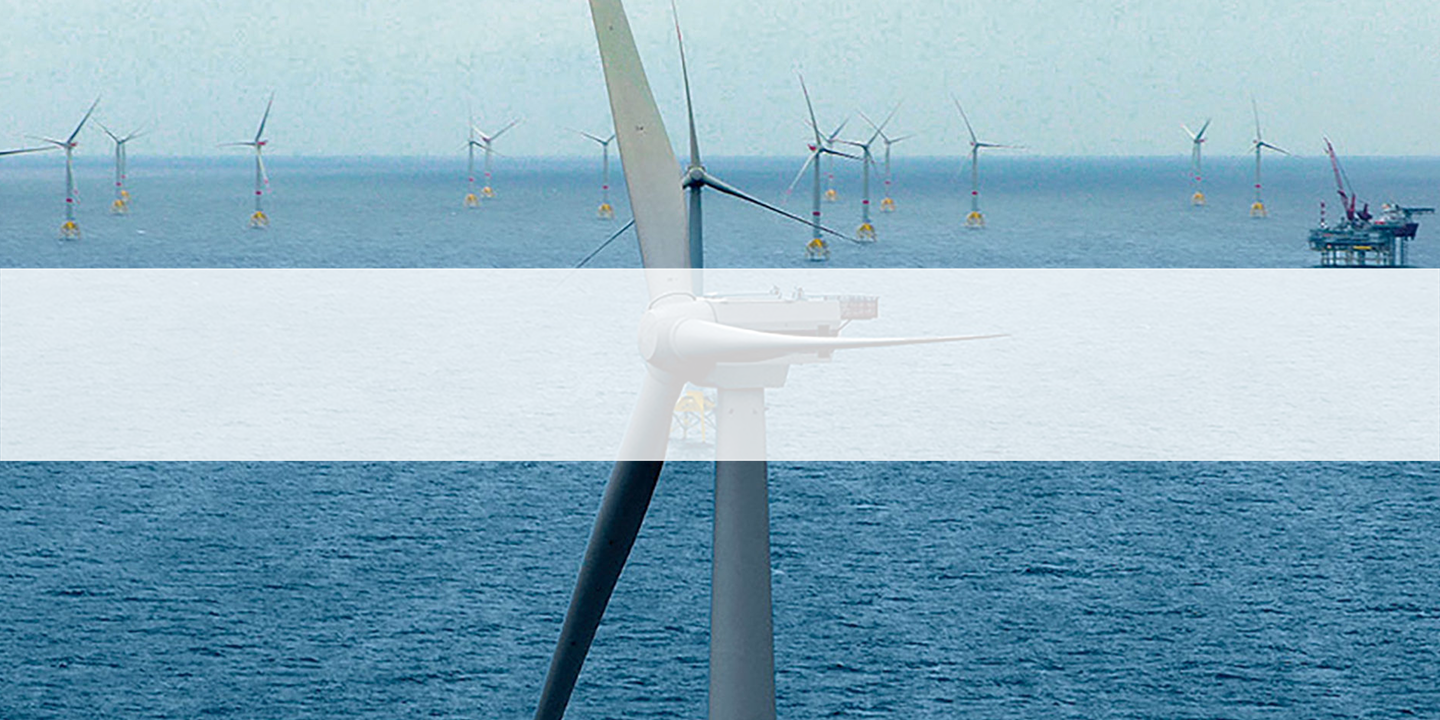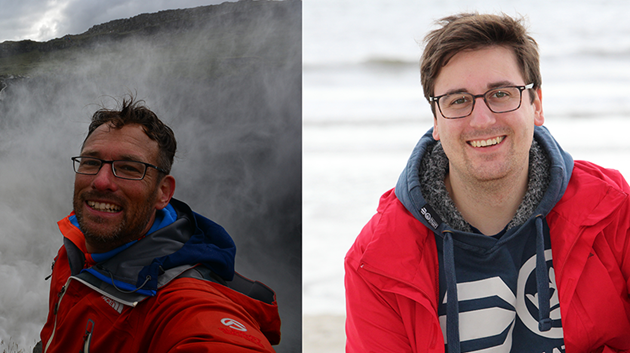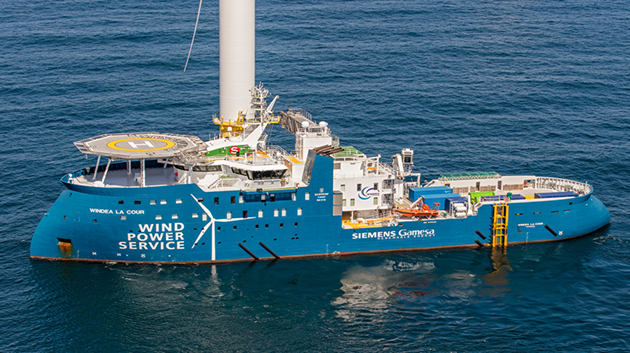
Collaborating to find new efficiencies in the operation of offshore wind plants
Madrid / 26 July 2021
As wind increasingly assumes a dominant share of the energy mix of countries, it becomes imperative to ensure wind power generation is as cost-effective as possible. To this end, the industry’s global players have joined forces to lower the cost of offshore wind energy. The ROMEO project aims to develop advanced technological solutions that enable offshore wind power facilities’ operation and maintenance costs to be reduced.
As wind increasingly assumes a dominant share of the energy mix of countries, it becomes imperative to ensure wind power generation is as cost-effective as possible. To this end, the industry’s global players have joined forces to lower the cost of offshore wind energy. The ROMEO project aims to develop advanced technological solutions that enable offshore wind power facilities’ operation and maintenance costs to be reduced.
Backed by the EU, the Romeo project comprises a consortium of 12 key industry players. Siemens Gamesa is playing an active role in contributing to this goal by developing diagnostic solutions to enhance efficiency in the operation and maintenance of wind sites.
"There are two main operational costs for any wind project," says Daniel Quecedo, Transversal project manager in Turbine Engineering, Siemens Gamesa. "One is the periodic preventive maintenance tasks to ensure smooth and long-term operations of the wind turbines while the other is the unplanned maintenance required in the event of abnormal performance. Both cause downtime and can have a big impact on operational costs, especially in the event of irregularities where vessels and helicopters carrying maintenance personnel have to be dispatched to handle emergencies. Now, if you have a built-in diagnostic tool that raises alerts of probable irregularities so that these can be attended to in time, imagine the cost saving. In fact, if the diagnosis is effective enough, then even the planned maintenance schedule can be managed to have a net positive impact on O&M costs."
"There are two main operational costs for any wind project," says Daniel Quecedo, Transversal project manager in Turbine Engineering, Siemens Gamesa. "One is the periodic preventive maintenance tasks to ensure smooth and long-term operations of the wind turbines while the other is the unplanned maintenance required in the event of abnormal performance. Both cause downtime and can have a big impact on operational costs, especially in the event of irregularities where vessels and helicopters carrying maintenance personnel have to be dispatched to handle emergencies. Now, if you have a built-in diagnostic tool that raises alerts of probable irregularities so that these can be attended to in time, imagine the cost saving. In fact, if the diagnosis is effective enough, then even the planned maintenance schedule can be managed to have a net positive impact on O&M costs."
ROMEO was a good opportunity for Siemens Gamesa to take part in the development of an integrated, flexible and interoperable platform that will improve the decision-making process for handling diagnosis and prognosis of abnormal performance for offshore wind projects.
"The project consists of building this platform and having it implemented by a wind project operator. It provides fast decision making for the operation of wind power plants, thereby making it a highly effective solution" he went on to say.
Fully aligned with Europe's climate change goals, ROMEO is one of the most important and ambitious R&D projects in the region. It falls under the Europe Horizon 2020 Innovation Action calls for Societal Challenges. Participants include some of the most important players in the offshore wind industry, such as Iberdrola (project coordinator), Ramboll, IBM, EDF, Bachmann, Siemens Gamesa, Minsait-INDRA, LAULAGUN, ZABALA, UPTIME Engineering and University of Strathclyde, Glasgow. Under this European R+D project, these companies are working together to develop advanced remote monitoring solutions, diagnosis and prognosis models, and effective maintenance strategies that will move the industry to condition monitoring systems.
Introduced in June 2017, this five-year project is now in its third and final phase. Siemens Gamesa is actively engaged in conducting pilot tests in real operational environments at three wind power plants- Teesside in the UK, managed by EDF, and Wikinger and East Anglia ONE managed by Iberdrola in Germany and the UK respectively.
Fully aligned with Europe's climate change goals, ROMEO is one of the most important and ambitious R&D projects in the region. It falls under the Europe Horizon 2020 Innovation Action calls for Societal Challenges. Participants include some of the most important players in the offshore wind industry, such as Iberdrola (project coordinator), Ramboll, IBM, EDF, Bachmann, Siemens Gamesa, Minsait-INDRA, LAULAGUN, ZABALA, UPTIME Engineering and University of Strathclyde, Glasgow. Under this European R+D project, these companies are working together to develop advanced remote monitoring solutions, diagnosis and prognosis models, and effective maintenance strategies that will move the industry to condition monitoring systems.
Introduced in June 2017, this five-year project is now in its third and final phase. Siemens Gamesa is actively engaged in conducting pilot tests in real operational environments at three wind power plants- Teesside in the UK, managed by EDF, and Wikinger and East Anglia ONE managed by Iberdrola in Germany and the UK respectively.
Delivering value through partnership
The project has been divided into 10 work packages where each player is assigned specific operative objectives. Siemens Gamesa is responsible for the diagnosis, prognosis and feedback of problems in the fleet. "Our goal is to help wind projects improve their logistics planning by providing them with a notice period between 3 and 12 months depending on the irregularity. This can have a far-reaching effect on streamlining maintenance schedules and increases the life of the wind turbine components," explains Cristian.

Now, in the last phase, the algorithms have been deployed in the project environment and have started collecting valuable data inputs. "Covering close to 200 wind turbines across three wind sites, we are analyzing more than 1,600 variables," said Cristian. "Big data and machine learning play a very important role given the amount of data that needs to be analyzed. We have developed more than 100 data driven examples to test for normal situations and abnormalities and expect to clock nearly 5 million computing hours analyzing operational data by the end of the project."
A future-proof remote monitoring solution that works for all
In parallel with development tasks, during 2020 and 2021, Siemens Gamesa's partner EDF is collecting data from its small-scale electrical drive train test bench. “This is done to scale up and compare with actual damages in equivalent offshore wind turbines. The approach based on the analysis of individual abnormalities makes detection, diagnosis and prognosis more effective" says Daniel. "We are first enhancing our knowledge of why irregularities occur in wind projects, which does not only fill in an existing gap in academia but provides real-time models for industry to implement." In February 2022, the public report on the capability to port algorithms from ROMEO will be delivered to the corresponding offshore designs.
By 2022, tests based on daily data will conclude, and pure machine learning algorithms (diagnosis modules) will be deployed for the wind sites. "This third-generation condition monitoring system has been very carefully built on the power of Big Data and Artificial Intelligence," says Cristian. "Wind farm players can rest assured that they will be able to decisively decrease the number of irregularities that cause downtime, resulting in an overall increase of availability. It will also help them increase the lifetime of turbines, reduce the number of person/hours needed for annual inspections of the turbine and reduce the O&M costs related to wind turbine materials."
ROMEO’s achievements will soon be seen. This project remains a clear example of how teamwork throughout the industry will take wind to the next level.
By 2022, tests based on daily data will conclude, and pure machine learning algorithms (diagnosis modules) will be deployed for the wind sites. "This third-generation condition monitoring system has been very carefully built on the power of Big Data and Artificial Intelligence," says Cristian. "Wind farm players can rest assured that they will be able to decisively decrease the number of irregularities that cause downtime, resulting in an overall increase of availability. It will also help them increase the lifetime of turbines, reduce the number of person/hours needed for annual inspections of the turbine and reduce the O&M costs related to wind turbine materials."
ROMEO’s achievements will soon be seen. This project remains a clear example of how teamwork throughout the industry will take wind to the next level.



